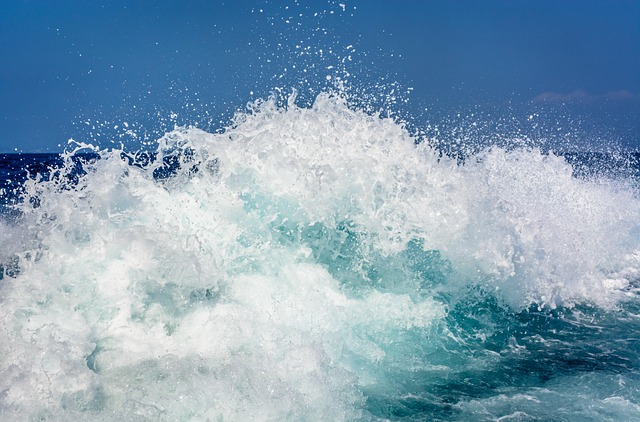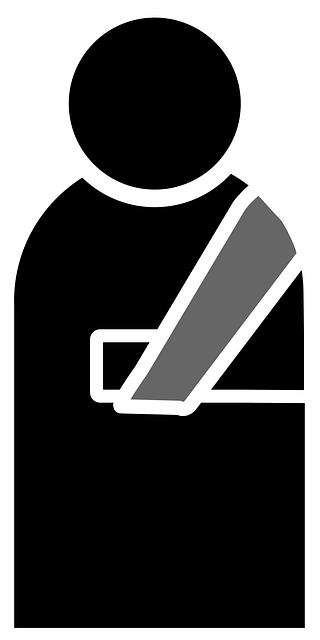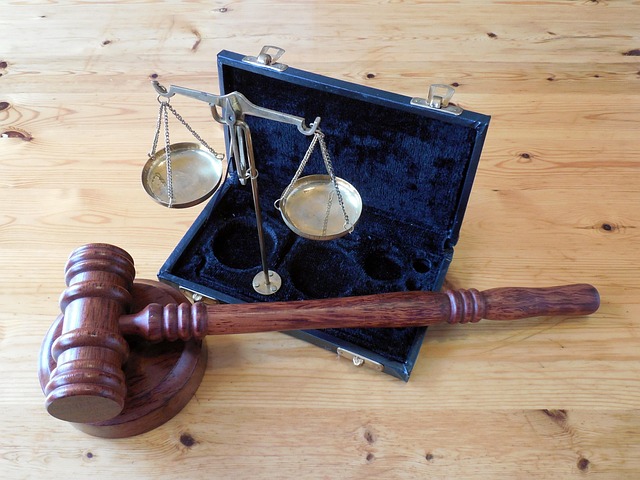Dangerous Toy Lawyer: Uncovering Manufacturer Negligence for Safe Products

A dangerous toy lawyer is an expert in protecting children and caregivers from unsafe products throu…….
In the dynamic world of product liability, a niche yet critical area has emerged known as “Dangerous Toy Lawyer.” This specialized legal field focuses on ensuring the safety of toys and playthings, holding manufacturers and distributors accountable for any hazards associated with their products. As playtime is an integral part of childhood development, the role of these lawyers is paramount in protecting young minds and bodies from potential risks. This article aims to provide a comprehensive insight into the world of Dangerous Toy Lawyer, exploring its various facets, impact, and the broader implications on industry standards and consumer safety.
Dangerous Toy Lawyer refers to legal professionals who specialize in representing victims injured by defective or hazardous toys. This practice area encompasses a wide range of legal services, including product liability claims, personal injury lawsuits, and regulatory compliance advice. These lawyers navigate complex laws and regulations to ensure that toy manufacturers adhere to safety standards and compensate affected individuals or families for any resulting damages.
Product Liability: At the heart of Dangerous Toy Lawyer lies product liability law, which holds manufacturers and distributors liable for selling defective products. In the context of toys, this includes design flaws, manufacturing defects, and inadequate warnings or instructions that lead to injuries.
Personal Injury Law: Lawyers in this field often represent clients who have suffered physical harm due to dangerous toys. This may include fractures, choking hazards, chemical exposures, or other traumatic injuries requiring medical attention.
Regulatory Compliance: They guide toy manufacturers and retailers on adhering to safety regulations set by governing bodies like the Consumer Product Safety Commission (CPSC) in the United States. This involves staying updated with product standards, conducting risk assessments, and implementing necessary safety measures.
The modern concept of Dangerous Toy Lawyer gained prominence in the late 20th century as consumer protection laws became more stringent. Major incidents, such as the recall of millions of toys due to lead poisoning concerns in 2007, brought widespread attention to the issue. This led to increased scrutiny on toy manufacturers and a subsequent rise in legal actions related to product safety.
The influence of Dangerous Toy Lawyer extends beyond national borders, as toys are inherently global products. International trade agreements and consumer protection organizations play a crucial role in setting and enforcing safety standards worldwide. For instance, the European Union’s (EU) strict toy safety regulations set a benchmark for many countries, influencing legal frameworks and industry practices globally.
Different regions have varying approaches to Dangerous Toy Lawyer due to cultural, economic, and legal differences:
North America: The United States and Canada have well-established product liability laws, with a strong emphasis on individual states’ rights to regulate consumer protection. This has led to a robust legal environment for Dangerous Toy Lawyer.
Europe: The EU’s comprehensive product safety regulations provide a unified framework for member states. However, individual countries may have specialized consumer protection agencies and legal precedents that shape their approach to toy-related litigation.
Asia: Countries like China, as major toy manufacturers, face increased scrutiny from global importers regarding product safety. This has prompted the Chinese government to strengthen its regulatory bodies and legal frameworks to address Dangerous Toy Lawyer concerns.
Stricter Safety Standards: A global trend towards more stringent toy safety regulations is evident, driven by consumer awareness and media scrutiny. This includes mandatory testing for phthalates, lead, and other harmful substances in toys.
Class Action Lawsuits: Complex cases involving widespread product defects often result in class action lawsuits, where a group of consumers sues a manufacturer collectively. This trend reflects the scale and impact of dangerous toy incidents.
Digital Toy Integration: The rise of digital toys and smart playthings presents new challenges, as these products may have unique safety considerations related to electronics, data privacy, and cybersecurity.
The global toy market is a multi-billion-dollar industry, with various segments catering to different age groups and interests. Dangerous Toy Lawyer has a significant impact on this market by influencing consumer confidence and brand reputation:
Recall Costs: Toy manufacturers incur substantial expenses when recalling hazardous products, including product redesigns, testing, advertising campaigns for public awareness, and legal fees.
Liability Insurance: Companies invest in liability insurance to safeguard against potential lawsuits, which can be expensive, especially for small businesses.
Brand Reputation: Negative media coverage of dangerous toys can severely damage a manufacturer’s reputation, leading to loss of market share and customer loyalty.
Investment in the toy industry is influenced by safety-related factors:
Risk Aversion: Investors are increasingly cautious about supporting companies with poor safety records or those facing ongoing legal challenges related to product liability.
Innovation and Safety: On the other hand, companies that prioritize innovation and safety measures may attract investment due to their ability to meet evolving consumer demands and regulatory requirements.
Technology plays a dual role in Dangerous Toy Lawyer:
Risk Mitigation: Advanced materials, design software, and testing technologies enable manufacturers to create safer toys with enhanced durability and fewer defects.
Digital Tracking and Traceability: Blockchain technology and IoT (Internet of Things) devices can improve product tracking, ensuring that hazardous toys are quickly identified and removed from the market.
Smart Toys and AI Integration: The integration of artificial intelligence in toys offers both benefits and challenges. While AI can enhance learning experiences, it also raises concerns about data privacy and potential security vulnerabilities.
3D Printing and Customization: This technology allows for personalized toy designs but may introduce new safety considerations regarding material quality and product consistency.
Virtual Reality (VR) Play: As VR becomes more accessible, the creation of immersive play experiences will require careful consideration of user safety, especially for younger audiences.
Several international and regional organizations play a pivotal role in setting toy safety standards:
Consumer Product Safety Commission (CPSC): The primary regulator in the US, responsible for protecting consumers against unsafe products, including toys.
European Committee for Standardization (CEN): Sets European standards for product safety, with specific guidelines for toys and childrens’ products.
International Organization for Standardization (ISO): Develops international standards, some of which are adopted by regional bodies to ensure global toy safety consistency.
Safety Standards: Governments establish minimum safety requirements for toys, covering aspects like material composition, mechanical properties, and electrical safety for electronic toys.
Labeling and Packaging: Clear and accurate labeling is mandatory, providing critical information about product use, age suitability, and potential hazards.
Testing and Certification: Independent testing agencies assess products against safety standards, issuing certifications to ensure compliance.
Complex Litigation: Dangerous Toy Lawyer cases can be highly complex, involving intricate product design, multiple defendants, and diverse legal jurisdictions. This complexity extends litigation timelines and increases costs.
Costly Recalls: Despite their necessity, recalls are expensive for manufacturers, often incurring significant financial losses due to product disposal, replacement, and marketing campaigns to restore consumer trust.
Inconsistent Regulation: Variations in toy safety regulations across regions can create challenges for international manufacturers, leading to compliance issues and potential legal complexities.
Standardized Global Regulations: Encouraging the development of more uniform global safety standards will reduce compliance costs for manufacturers and streamline legal processes.
Enhanced Consumer Education: Educating consumers about product safety, proper usage, and reporting hazardous toys can complement regulatory efforts and empower individuals to make informed choices.
Improved Industry Collaboration: Foster collaboration between manufacturers, regulators, and legal professionals to share best practices, identify emerging risks, and streamline recall processes.
A major US toy manufacturer recalled millions of small dolls due to a choking hazard posed by small, detachable parts. This incident resulted from inadequate risk assessments during product design. The company faced numerous lawsuits and significant financial losses. However, the recall was effective in preventing potential injuries, demonstrating the positive impact of strict safety regulations.
A European consumer group tested imported toys from China and found elevated levels of lead in several products. This led to a comprehensive investigation, resulting in stricter import controls and improved quality checks. The case highlighted the importance of international cooperation in ensuring toy safety across borders.
A tech company launched a line of interactive smart toys that connected to an app via Bluetooth. Legal challenges arose due to concerns about data privacy, as the toys collected voice recordings and personal information from children without explicit parental consent. The case led to updated guidelines for developers of connected children’s products.
Sustainable Toys: There is a growing demand for eco-friendly and sustainable toys, driving innovation in materials and manufacturing processes. This trend aligns with global sustainability goals and may shape future regulatory priorities.
Digital Safety Standards: As digital toys become more prevalent, establishing comprehensive safety standards for data privacy, cybersecurity, and product functionality will be crucial.
Personalized Learning Toys: The intersection of education and play is a rising trend, combining learning apps with physical toys to enhance child development. However, this raises new questions about product safety and content appropriateness.
Virtual Reality Play Spaces: VR technology offers immersive play experiences but requires careful consideration of user safety and age-appropriate content.
Risk Assessment Tools: Developing advanced risk assessment tools that incorporate big data analytics can help manufacturers identify potential hazards early in the product development stage.
Industry Collaboration Platforms: Creating digital platforms for industry professionals to share research, best practices, and real-time safety updates can enhance global toy safety standards.
Dangerous Toy Lawyer is a critical aspect of modern consumer protection, ensuring that toys on the market are safe for children and families worldwide. This article has explored various facets of this specialized legal field, from its historical context to technological advancements and global trends. The role of lawyers in navigating complex regulations, advocating for victims, and driving industry improvements is invaluable. As technology continues to shape playtime, so too will the landscape of Dangerous Toy Lawyer, requiring adaptability and innovation to keep pace with evolving challenges and opportunities.
How do I know if a toy is unsafe?
What are the legal rights of parents when their child is injured by a dangerous toy?
How do manufacturers ensure their toys meet safety standards?
Can technology help prevent dangerous toys from reaching the market?
What is the significance of international cooperation in toy safety?

A dangerous toy lawyer is an expert in protecting children and caregivers from unsafe products throu…….

Dangerous toy lawyers are vital advocates for enhanced product safety, specializing in representing…….

A dangerous toy lawyer is a vital advocate for consumer protection, specializing in holding manufact…….

Battery-powered toys, despite their appeal, pose severe risks of fires, explosions, and injuries. Da…….

A dangerous toy lawyer is a legal expert who advocates for product safety, investigating incidents o…….

The Consumer Product Safety Improvement Act (CPSIA) is a vital US law aimed at protecting consumers,…….

Dangerous toy lawyers are specialized legal professionals who advocate for parental justice and chil…….

Victims of severe injuries caused by defective or hazardous toys should promptly contact a dangerous…….

In recent years, dangerous toy lawyers have emerged as specialists within personal injury law, addre…….